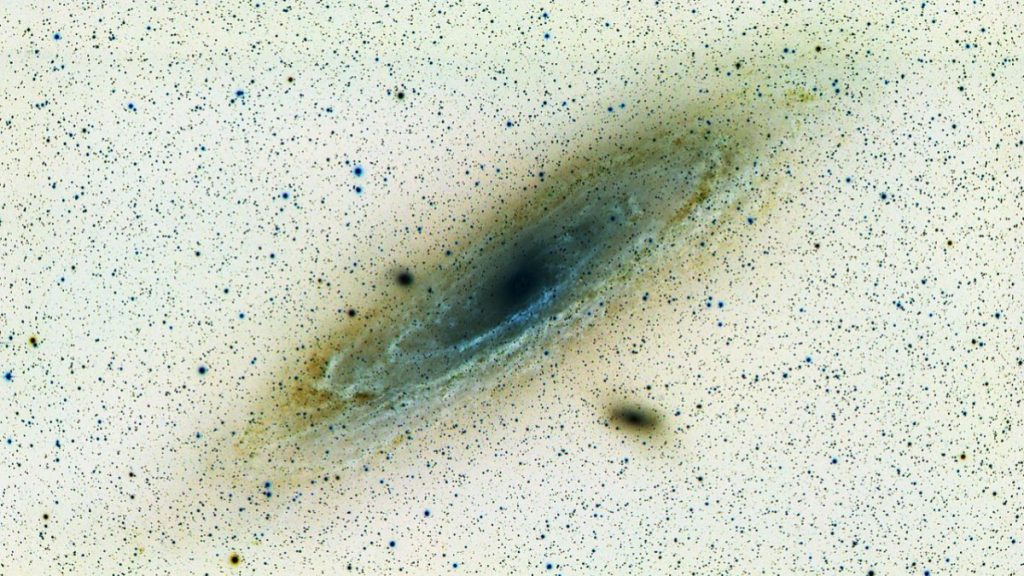ITS POSTMODERN AETHYR
The Missing Link: The Dark Matter Mystery – The Hidden Elephant of Cosmology
Abigail Anderson November 28, 2021
What is the size of the universe? From what is it made? How did it happen and how did it become as we know it today? Cosmology, which is the study of the origin and development of the universe, deals with these topics. It is currently one of the most exciting disciplines in the natural sciences, spanning physics from the smallest to the largest structures we know. The new series of articles illustrates the current state of knowledge and explains why the vast majority of cosmologists seem to cling to absurd ideas such as empty space with repulsive gravity, the emergence of the universe from nothing and the invisible matter of which 95% of the universe exists. The first three parts will be about dark matter – the invisible elephant in cosmology.
The discovery of the cosmic foam
If you look at the sky in a dark place on a clear moonless night, you will find a dull glowing band stretching across the whole sky: through the constellation Sagittarius, the famous summer triangle of the eagle, harp, and swan, Cassiopeia, Gemini all the way to Orion, and the circle closing in the southern sky, Invisible to our latitudes all year round, above the ship and the southern cross to the bow. This is our Milky Way, our home galaxy, roughly disc-shaped with a flat outer area and a thick, balloon-shaped central region (which is a Balken Spiral Galaxy).
It measures about 185,000 light-years away, contains hundreds of billions of stars and at least many planets. When viewed from above, it shows 4 outward spiraling arms, which protrude from the starry disk evenly due to young blue stars. Our sun lies on the inner edge of a spiral arm about halfway from the center. It spins itself majestically; It takes the sun 240 million years to form one orbit. Before the last cruising, the first dinosaurs were just showing up. An island in the world, where the visible universe inhabits hundreds of billions. But it looks like this is just foam on much stronger ocean waves.
What’s missing: In the fast-paced world of technology, there is often time to rearrange various news and wallpapers. On the weekend we want to take it, follow the side trails away from the stream, experiment with different perspectives and make the nuances heard.
Our concept of the universe looked very different 100 years ago: Until the 1920s, a large part of astronomers assumed that the Milky Way formed the entire universe and that the numerous small, often spiral-shaped nebulae in the sky were like large nebulae. In the constellation Andromeda they are nothing but gaseous clouds within the Milky Way – otherwise they would have to be millions of light-years away, which a lot seemed completely absurd. Others believe that galaxies like the Milky Way were galaxies and that the universe was much larger than expected.
When larger telescopes such as the 2.5-meter Hooker telescope on Mount Wilson made it possible to dissolve the Andromeda Nebula into individual stars, a dispute among cosmologists called the “Great Debate” was finally resolved in the 1920s: Edwin Hubble succeeded that it was possible to determine the distance of the nebula Andromeda for the first time is based on a specific type of variable star whose periodic pulsations duration allows inferences to be drawn about its luminosity. Because a certain luminosity results in a clear brightness for every distance. It has reached 900,000 light-years, because the relationship of the brightness of the period to Stars will benefit not properly calibrated; Today we know it is 2.5 million light-years away. But the result, in the right order of magnitude, was a gigantic leap in knowledge that degenerated the Milky Way from the rank of embodiment of the entire universe into a speck of dust in itself.
No comments:
Post a Comment